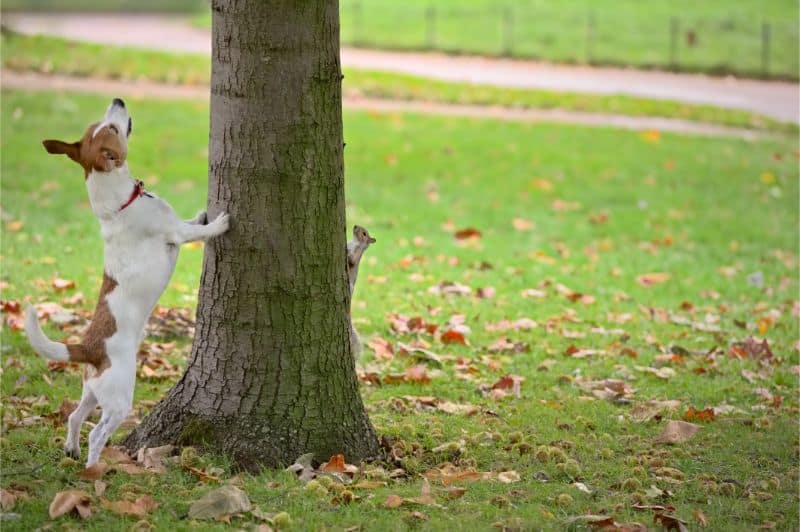The Great Chase: How To Prevent Your Dog From Chasing Small Animals

The desire to chase is an instinctive and innate drive in most breeds. At its most basic, dogs evolved as predators and scavengers, and so this natural instinct can be difficult to curb or eradicate, especially with certain breeds.
Still, it can be possible to train, distract, and prevent your dog from chasing small animals and birds.
Why Do Dogs Chase?
The desire to chase is closely tied to a dog’s amazing sense of smell. Their nose, which is 10,000 more sensitive than ours, acutely detects the scent of small mammals and birds, and the quick movements of these “prey animals” also serves to attract some dogs to the chase.
Another reason dogs chase is that the activity is inherently pleasurable for them. Your dog has a lot of fun in the chase, and sometimes catching something can deliver the ultimate reward – unfortunately.
Prevent Your Dog From Chasing
Prevention may be your best method of stopping your dog from the chase. Here are some ideas.
The Leash. It’s a simple fact that having your dog on a leash is the best way to prevent your dog from chasing small animals. This ensures you have full control at all times, and is the smartest preventive measure when you’ll be in an environment with other animals.
Change The Schedule. Wildlife is most active at dawn and dusk. Whenever possible, walk your dog during the middle of the day.
A Tired Dog. Managing your dog’s energy levels can prevent a whole host of behavioral issues. Keeping your dog tired with appropriate but vigorous daily exercise can take the edge off and prevent your dog from chasing.
A Hungry Dog. A dog that is fed before a walk may be less inclined to give chase. That full belly can stifle the motivation and drive to chase.
Try Games. Give your dog some mental stimulation at home, too. Sometimes the desire to chase is less about hunger and more about the fact that it’s fun! So channel that drive with interactive games, train your dog for nose work at home, or teach your dog to play hide-n-seek.
Watch Body Language. Learn to watch your dog’s body language for subtle clues that they’re revving up. If you get really good at this, you may even spot the critters before your dog does. Look for:
- A stiffening body
- Obvious excitement
- Staring at something
- Pointing (with pointers)
Redirect Their Attention
If prevention isn’t working and your dog is about to give chase, it’s time to try some redirection techniques.
Distraction. Keep a handful of meaty, tasty treats in your pocket. If your dog is getting ready to chase, take one out and gain your dog’s attention with it, keeping your dog’s attention on you while you walk by the distraction.
Practice Makes Better. Some dog owners find that practicing with a stuffed toy makes it easier when there is a real animal involved. Enlist a helper to distract your dog with the toy while you practice redirecting with a treat.
Teach Your Dog Not To Chase
If you’ve got a chaser on your hands, teaching them some basic commands can help to mitigate the behavior. Here are some ideas.
Leave it. Teach your dog the leave it command. You can use this command to dissuade your dog from giving chase. And, you can also use it in case your dog was able to catch a small animal and you want to stop her from hurting it.
With this in mind, it’s essential that your dog is well versed in the leave it command well before you take her to an area with small animals and let her off leash.
A Strong Recall. The ultimate command in dog language is “come”. Ideally, teaching this command begins when your dog is a puppy, but dogs of any age can learn this skill with time and patience.
The Bottom Line
At the end of the day, preventing, redirecting, and teaching your dog not to chase is a tall order, no matter how you slice it. Using a number of techniques to prevent your dog from chasing small animals and birds may be your best option.
If you have any questions or concerns, please give us a call.
